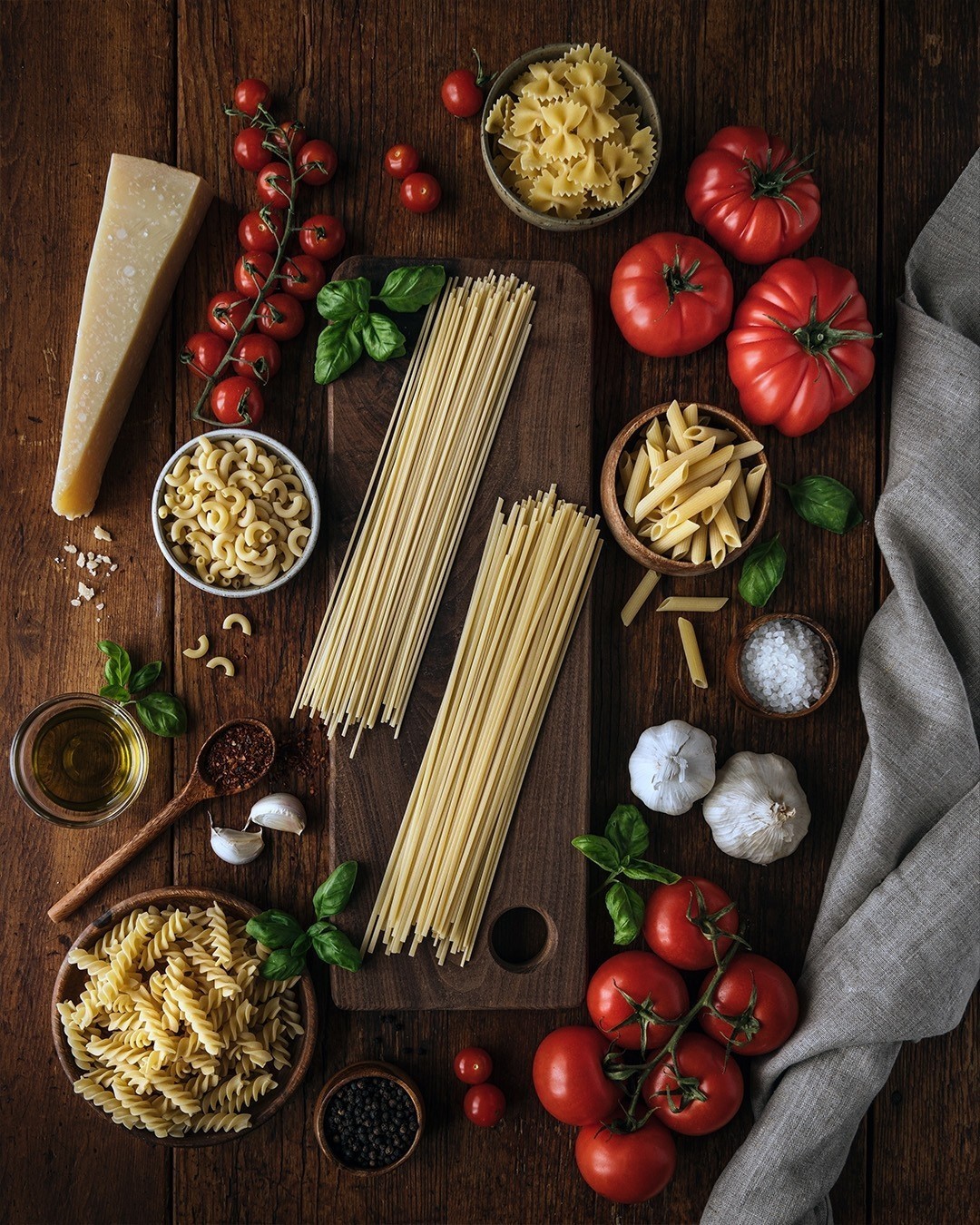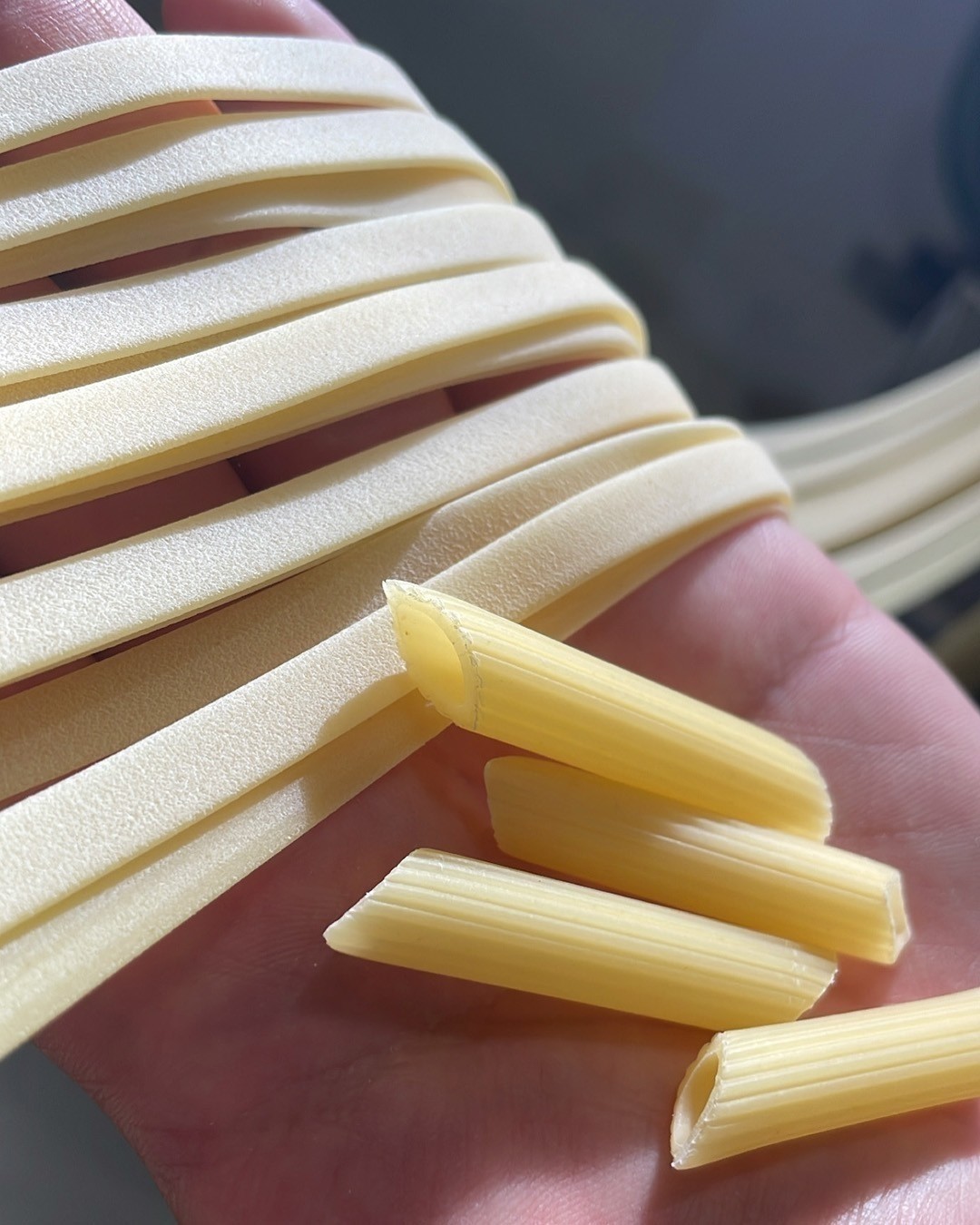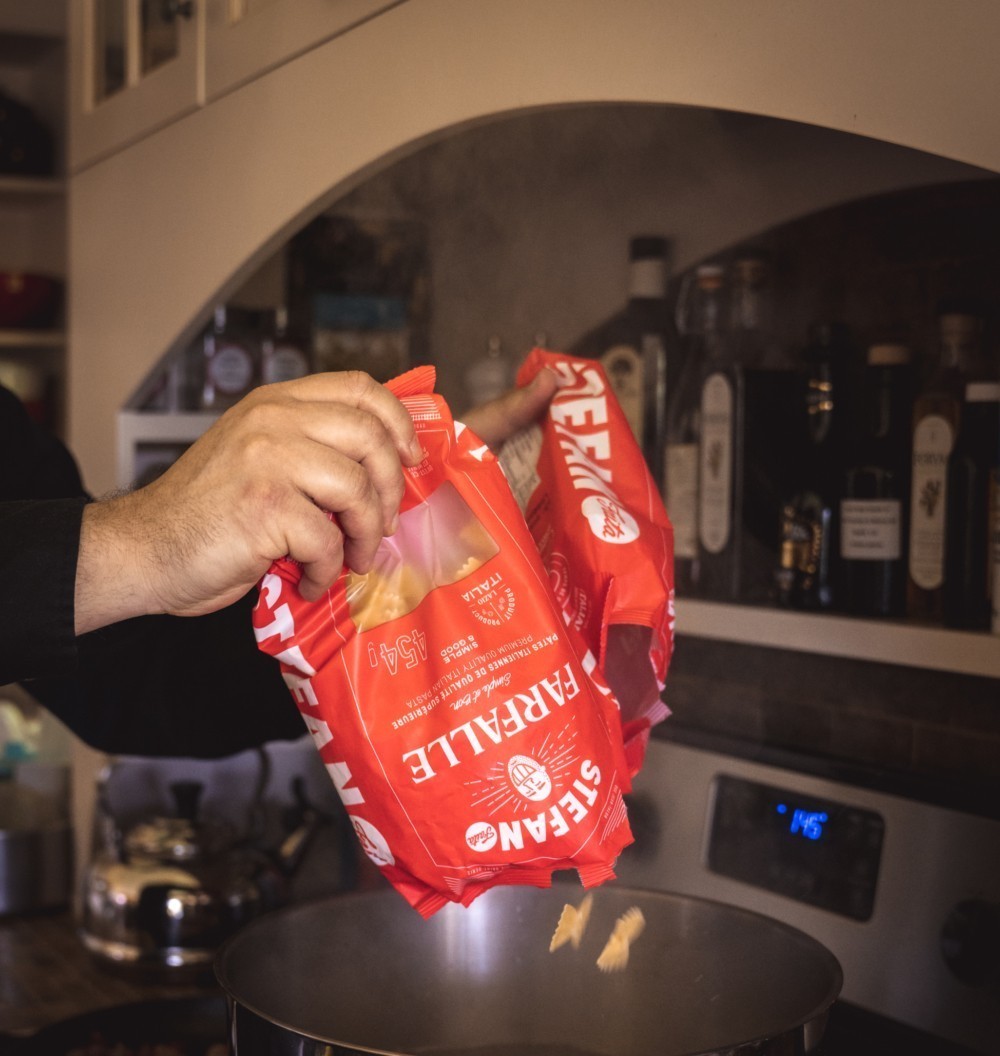Passionate about Pasta
Put simply, we love it!
Whether it’s long, short, in a tomato or creamy sauce, in soups, dry, fresh or stuffed… pasta has long been a staple in most homes, be it for a simple weeknight meal or a special occasion. And it’s no surprise because everyone loves la pasta!
On the Podium
If they gave out medals for the most pasta consumed by country, Italy would win by a mile. And that’s not just a stereotype of Italians, the statistics back it up: Italians eat more pasta than anyone else, devouring 23 kg per person per year! Pasta truly is a cornerstone of Italian cuisine.
With over 600 different shapes and varieties, there’s a pasta for every sauce … and everyone! From soups (think the classic in brodo specialties like tortellini Modenese and the pastina served to kids from a young age) to main courses and even dessert (people love torta di tagliatelle in the Emilia-Romagna region), Italians are infatuated with pasta. And why not? It’s a simple, reliable, affordable, and—let’s be honest—unbeatable starting point to shine the spotlight on a whole host of products, methods, and creativity. It really is no wonder that pasta is so popular around the world. But can the Italians claim it as their own?
Chow Mein Carbonara?
There’s no cut and dry version of the origins of pasta. For a long time, it was believed that Marco Polo introduced pasta to Italy in the 1200s after visiting China where the comforting dish was already very popular. However, evidence has since been brought to light that proves the Ancient Greeks and Romans were eating fresh pasta-like dishes long before then! The birth of dry pasta can be traced back to nomadic Arabian tribes, who perfected the drying process so that they could transport and enjoy the food on the road.
Pasta has a truly colourful history and the food as we know it today is the result of a melting pot of cultures! Beyond teaching us about its origins, the history of pasta is proof that good ideas can come from anywhere. For us, respecting the expertise is what matters most.
Slowly but Surely
Not all pasta is created equally. Its quality will greatly affect the flavour and texture of your favourite dishes. As far as we’re concerned, the best pasta takes time, skill and above all else, high quality durum wheat semolina. It really is the key ingredient for creating tasty and nutritious pasta. Then, you’ve got to think about machinery, and the best pasta is extruded from bronze dies. Unlike teflon, which has the annoying habit of producing smooth and brittle pasta, using bronze dies results in a porous and robust texture that sauce clings to. Last but not least, high quality pasta is slow dried at a controlled temperature. I’m sure you’ve already heard the saying, “Good things come to those who wait,” well, the same can be said for pasta. After drying for several hours, you obtain nutritious pasta that can be cooked uniformly. And of course, all Stefano pastas follow these golden rules to the letter!
Five Things You Might Not Know About Pasta
Pasta isn’t exactly an exotic ingredient, and most people can cook it well (if you’re in any doubt, we’ve got a pasta cooking guide that can help!) But let’s be honest, there’s still a lot that people don’t know. Here are five things you might not know about pasta.
1. Al dente
I’m sure you already know that to get an optimum texture, you should cook pasta al dente. But did you know the al dente cooking method also has nutritional benefits? Al dente pasta is digested more slowly, meaning it can help regulate blood sugar levels and help you feel fuller for longer. So, there’s another reason to follow the cooking instructions on our packaging.
2. Forks Over Spoons
As far as we’re concerned, there’s no wrong way to eat pasta. However, in Italy, the locals do not use spoons for long pasta. For a perfect mouthful, simply take a few strands of spaghetti on your fork and roll them on the side of your plate. Simple and good, just like our products.
3. Primo Piatto
To understand how Italians can eat so much pasta without getting bored, we have to look at the primo piatto concept. In Italy, after appetizers a primo course is served, this is usually a small pasta or rice dish, which is then followed by the secondo course, which is usually dish of meat or fish and vegetables. Pasta is enjoyed in small quantities and served with other delicious foods to create a complete and varied meal.
4. Pasta Secca, Pasta Fresca
It’s commonly believed that fresh pasta (often egg pasta) is more authentic than dry pasta. However, the reality is a lot more nuanced. Fresh pasta is only really made and consumed in northern Italy. The rest of the country uses dry pasta to prepare the majority of their dishes. Most Italians consider boxed dry pasta found at the grocery store to be a great choice, as long as it is high quality!
5. The Winning Combo
We all know that pasta and tomato sauce go hand in hand. Although this winning combination seems inseparable, pasta was enjoyed for centuries without tomatoes, as the pomodoro was only introduced to Italy from the New World in the 1500s! Which goes to show, it’s never too late for a good idea.








